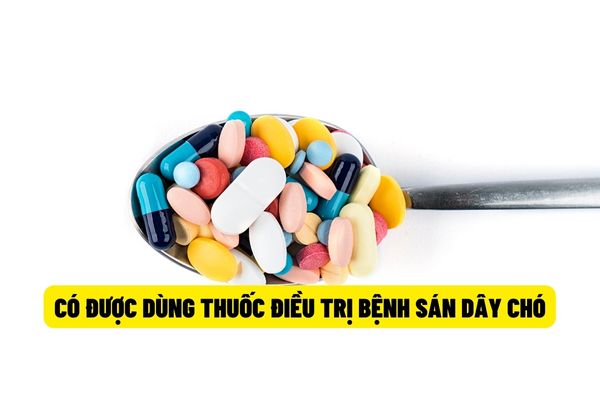Dog tapeworm infection and what to know? Can children use specific drugs to treat tapeworms in dogs?
Which method is used to test and diagnose canine tapeworm in Vietnam in humans?
Pursuant to Section 3, Section 4 of the Guidelines issued together with Decision 1658/QD-BYT in 2022 of the Ministry of Health, guiding the methods of testing and diagnosing canine tapeworm in Vietnam disease in humans as follows:
“3. SUBCLINICAL
3.1. Test
- Fresh examination of the aspirated fluid from the cyst shows the image of a tapeworm head and hooks.
- Serological test to detect antibodies to dog tapeworms (ELISA technique).
- Immunoassay or immunoelectrophoresis to detect Echinococcus tapeworm antigen.
- Complete blood count: eosinophils increase when the cyst ruptures.
- Histopathological examination: typical macrocystic morphology of water cyst/honeycomb cyst after surgery.
- PCR: Detecting the specific gene fragment of the dog tapeworm Echinococcus.
3.2. Image analysation
- Ultrasound: is the basic technique to diagnose Echinococcosis. The lesion image is cystic cysts in the abdominal area.
- Cardiopulmonary X-ray: Detects cysts in the lungs, chest, and bones.
- CT scan or MRI or Magnetic Resonance Cholangiopancreatography (MRCP): Detect images of cysts in difficult, polycystic positions.
4. DIAGNOSIS
4.1. Suspected case
- Patients who have lived in endemic areas with endemic diseases, eat dishes with risk of infection with larvae of Echinococcus.
- Imaging studies reveal one or more slow-growing cystic masses.
- Clinical symptoms depend on the location, size, number, and shape of cysts.
4.2. Identified case
A case of suspected disease and accompanied by one of the following criteria:
- Typical lesions of water cyst/honeycomb cyst detected by imaging and specific antibodies detected by ELISA.
- Results of fresh examination of the aspirated fluid from the cyst have an image corresponding to the parasite morphology in the water cyst/honeycomb cyst.
- Molecular biology techniques can detect E. granulosus or E. multilocularis species or other species in the specimens.
4.3. Differential diagnosis
- Benign/malignant tumors.
- Amebic liver abscess.
- Congenital cysts.
- Tuberculosis.
- Organ mushrooms"
Accordingly, according to the subclinical method, it is possible to use tests and imaging to identify canine tapeworm disease in humans.
For the diagnosis of canine tapeworm disease in humans, the diagnosis will be based on the cases of suspected disease, confirmed disease and differential diagnosis according to the content of the above guidelines.

Dog tapeworm infection and what to know? Can children use specific drugs to treat tapeworms in dogs? (Image from the internet)
Can children use specific drugs to treat canine tapeworm in Vietnam in humans?
Pursuant to Section 5 of the Guidelines issued together with Decision 1658/QD-BYT in 2022, guidelines on how to treat canine tapeworm in Vietnam in humans are as follows:
"5. TREATMENT
5.1. The principles of treatment
- Surgical removal of the cyst is the only definitive treatment in most cases of CE. It should be combined with medical treatment with specific drugs.
In addition, some other treatment methods such as:
+ Aspiration of cyst fluid
+ PAIR technique (subcutaneous aspiration, chemical injection, re-aspiration)
- In some cases, do not treat but only monitor (conservative “watch and wait” approach).
- For AEs, a combination of surgery and medication, liver replacement.
5.2. Specific treatment
- Surgical treatment:
+ Surgery to remove cysts
+ Aspiration of cyst fluid
+ Technique of subcutaneous suction, injection of chemicals, suction again.
- Medical treatment with larvicides of the benzimidazole group, indicated in some of the following cases:
+ The patient has water cysts in the liver and lungs but cannot be operated on.
+ Patients have multiple cysts in two or more different organs, or have cysts in the peritoneum.
+ With small cysts < 5 cm.
Prevention of recurrence after surgery.
+ With honeycomb cysts, the duration of continuous use of specific drugs is at least 2 years.
5.2.1. Regimen 1: albendazole (200mg and 400mg tablets)
a) Dosage
- Adults: 800mg/day, divided into 2 times/day x 28 days.
- Children > 1 year old: 10-15mg/kg/day (maximum 800mg/day), divided into 2 times/day x 28 days.
b) Therapy
The 28-day regimen uses albendazole to repeat at least 3 times, with a 14-day break between courses, which should be noted for side effects.
c) Contraindications of albendazole:
- People with a history of hypersensitivity to benzimidazole.
- Pregnant or lactating women.
- Children < 1 year old.
- People with a history of bone marrow toxicity.
d) Notes
- Be careful when using albendazole in patients with liver and kidney failure.
- The side effects of albendazole, including granulocytopenia, agranulocytosis, decreased types of red blood cells and effects on liver function with prolonged use. Therefore, complete blood count and liver function tests (transaminases) should be performed at the start of each treatment cycle and at least every 2 weeks during treatment. If liver enzymes are elevated, albendazole should be discontinued. Treatment can then be continued if liver enzymes return to pre-treatment levels, but more frequent testing is required upon re-treatment.
5.2.2. Regimen 2: mebendazol (100mg and 500mg tablets)
a) Dosage: 40 - 50 mg/kg/day divided into 3 times/day for many consecutive months.
b) Contraindications of mebendazole:
- People with a history of hypersensitivity to benzimidazole.
- Pregnant or lactating women.
- Children < 1 year old.
- People with a history of bone marrow toxicity.
c) Note
- Be careful when using mebendazole with liver failure, kidney failure.
- Side effects of mebendazole, including granulocytopenia and liver function effects with prolonged use.
5.3. Symptomatic treatment
Depending on the clinical symptoms to prescribe the appropriate treatment.
5.4. Surgical treatment
Refer patients to specialists for appropriate indications.
5.5. Follow-up after treatment
Patients need to be monitored and evaluated periodically for a long time."
Accordingly, children will still be used specific drugs to treat dog tapeworm disease. Based on the age of the child to choose the appropriate treatment regimen according to the content guided above.
What methods are used to prevent tapeworms in humans?
Pursuant to Section 7 of the Guidelines issued together with Decision 1658/QD-BYT in 2022, there are guidelines related to the prevention of canine tapeworm in Vietnam disease in humans as follows:
"7. PREVENTION
- Avoid contact with dog feces, pay attention to hand washing.
- Cut the transmission by not feeding the dog undercooked offal. Supervision of slaughterhouses.
- Burn or bury the organs of dead intermediate hosts.
- Periodic deworming for high-risk dogs, reducing the number of individuals.
- Field and laboratory staff ensure biosafety."
Accordingly, to effectively prevent canine tapeworm in Vietnam disease in humans, it is necessary to take measures according to the content of the instructions above.
LawNet
